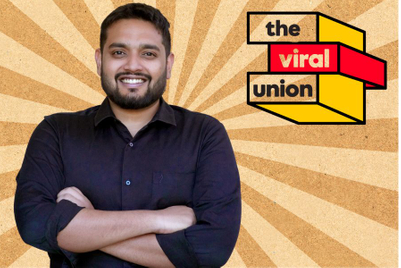
Speaking at a ‘Social Intelligence for Business Success’ conference hosted by Adfactors, Dr Arvind Gupta, national technology head, Bharatiya Janata Party, listed reasons behind the party’s success on social media, Narendra Modi’s ‘great communication skills’, linking technology with communication, and more.
He was introduced by Kiran Khalap, co-founder, chlorophyll, who played an ad created for Lyndon B Johnson’s election campaign in the US. Noting that the similarity between Johnson’s election and BJP’s win in India this year was the ‘clean sweep’, he welcomed Gupta to address the audience.
Gupta, who revealed that the topic ‘Social Intelligence for Business Success’ was also the topic for his PHD, said, “The topic has evolved over the past two decades and data could be substituted with either technology or social, but the core would be the same, i.e. how we analyse data.”
How to use data and make it actionable
Gupta delved into how the BJP had used data and made it actionable during the recent elections.
“This election we used convergence of technology with communication. We have a prime minister who understands all this and is an expert in communication. Our publicity campaign before February 2014 was none, yet we were always in the news. From December 2012 to February 2014, our campaign was primarily on social media. Our primary tool kit over 18 months was our technology,” said Gupta.
He added, “We now have data of the 3.6 lakh polling booths. We have data of which areas we have performed better in. If we roll back to July 2013, we had a mission and that was ‘272+’. Back then we were targeting booths and trying to reach out to people through either mobile, social or human. We used analytics to reach them online or on-ground; so we used both mass communication and micro communication. Both were used in a 360 manner until the major outreach campaign was rolled out in February 2014. The campaign was so huge that we knew whom to make voice calls to (Narendra Modi’s voice message was going out to people). So, we used a mix of all digital. It was advanced use of analytics which took about three to four years of planning.”
Social Intelligence
Referring to the hype around ‘Big Data’, Gupta said, “There’s this key word called ‘Big Data’. Everyone is talking about it. I think it’s like teenage sex. People are talking a lot about it, but no one actually knows what it is.”
On the BJP reaching out to people on social media, he elaborated, “We could reach out to people even when they were not using hashtags. People were surprised how we reached out to them and provided personalised messages. On 2 October, Modi was speaking at an event in Delhi. He made a statement ‘Toilet before temples’. That set a national debate. He was just making a statement of the importance of sanitation. There were massive reactions.”
“We then ran a quick analytics of the chatter around this. 45 per cent of the people (who were floating voters) agreed with the statement made by our prime minister. We reacted to this at that very moment and this resulted to an increase to 68 per cent of people agreeing with the statement. The online positive sentiment changed the conversation and that set the agenda for Modi’s talk on 15 August where he spoke about sanitation again. This is an example of using big data,” added Gupta.
Specific to use of data during the election campaign, Gupta revealed that the camp analysed data between 12 and 16 May (last day of voting and the day election results were announced). With the help of data, the party’s technology head said they could predict winning over 260 seats.
He complimented the data team that consisted of just five members. He also stated that the digital team working for the BJP had just 40 people during the elections and is otherwise a team of just 20 people. He said, “The response time was great and the RoI was huge. You’ll see this social media effort continuing.”
Use of rallies
The online - on-ground synergy was the next subject of discussion. He said, “Our content creator was Narendra Modi who did 400-plus rallies. But we needed more so we live streamed all his rallies on Yuva TV. We also had 3D holograms of Mr Modi talking to people in some towns. So, he reached out to people virtually. We used mobile like never before. You could call on a number and hear his entire speech. No data or internet was required. The amplification was immense. 2.2 lakh people called in and heard his Patna rally alone.”
Gupta surmised that while a lot of technology was put to use, it was practical enough for people to embrace.


.jpg&h=334&w=500&q=100&v=20250320&c=1)
.jpg&h=334&w=500&q=100&v=20250320&c=1)

.jpg&h=334&w=500&q=100&v=20250320&c=1)


.jpg&h=334&w=500&q=100&v=20250320&c=1)


.jpg&h=334&w=500&q=100&v=20250320&c=1)
.jpg&h=268&w=401&q=100&v=20250320&c=1)




.jpg&h=268&w=401&q=100&v=20250320&c=1)


